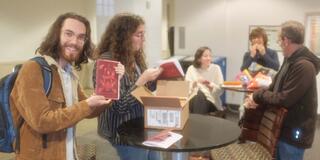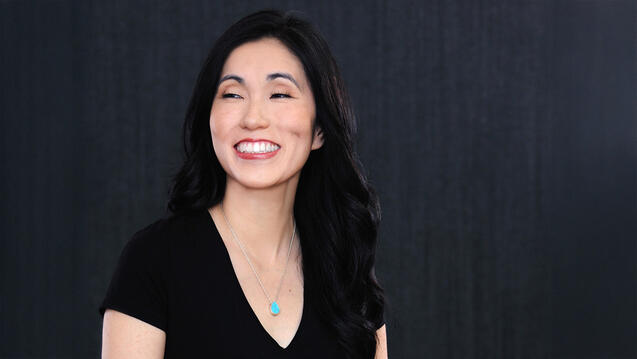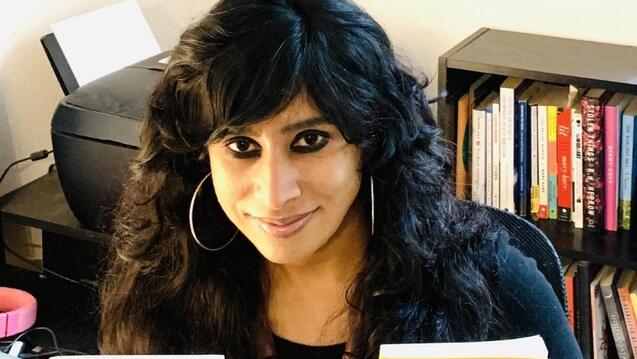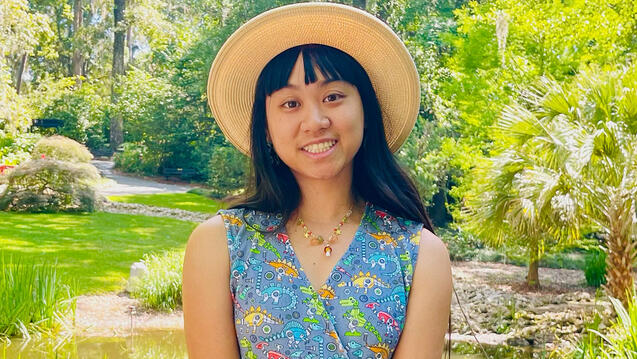MFA Four Leaf Collective: A Student-Run Organization on Publishing

An interview with Ben Adams, an editor at the MFA student-run organization Four Leaf Collective.
How did you all come up with the Four Leaf Collective student organization?
I came to 4LC through one of USF’s writing retreats. It was early in my first semester, and the retreat was on a break. A few of us were enjoying the view from Lone Mountain’s back patio, talking about what brought us to USF, our writing, what we hoped to achieve while in the program. And Adam Wilson brought up what I thought was a brilliant idea. He said he wanted to start a student group, focusing on peer editing and making chapbooks. From this, grew the Four Leaf Collective.
What's the vision, aesthetic, or approach to what you all are doing?
It took us a few months to figure out our identity as a group. At its core, 4LC has always been about DIY publishing, whether that be zines, chapbooks, or our anthology. A punk rock approach. We want to empower USF’s MFA students, show them how to publish their own work without relying on large publishing houses or big-name literary magazines, most of which don’t take unsolicited submissions.
In the Spring ’24 semester, we were discussing how we could celebrate all the students in our program, the hard work everyone put in over the course of the school year, the fantastic writing they created. Early on, the idea for an anthology was floated, and as we brainstormed, we realized this was the best way to showcase our classmates’ talents. So, settling on publishing an anthology, we sent out an open call for submissions to all students, and about half sent us their work. And we just did it. We figured out how to do layout, how to organize the editorial process, everything. And the result was a phenomenal book. We recently nominated three short stories and three poems for the Pushcart Prize, all written by students while they were in the program, all published in our anthology.
In October, we released a Halloween zine. We have plans for Valentine’s Day zine. And we’ll be publishing another anthology at the end of the school year.
Who does what in the Four Leaf Collective?
First off, all members of 4LC are editors. It’s generally understood, when you join 4LC, you’re expected to edit. This is something our members are already doing. As writers, we are always editing our own work, toiling away in coffee shops, the library, or on our couches. We’re always self-editing. And we’ve already edited each other’s work in workshop, offering feedback on scenes needing exploration, on characterization. So, editing is something we’re already doing, even if we’re not thinking of it in those terms. But it’s not a free-for-all; we do have a division of labor. At the top is the Editor in Chief, then Senior Fiction, Non-Fiction, and Poetry editors, general editors, and Layout and Design (Layout is arguably the most important task, especially when publishing the anthologies). We’re always looking to improve how we operate, but our current breakdown works like this: the EIC oversees everything, sending submissions to the senior editors, who forward them on to editors; once the pieces are edited and sent back to the senior editors, the EIC and senior editors cultivate the layout, matching pieces with similar themes, and then everything is sent to layout, and on to the printer.
What's the editorial process like?
For our editors, we try to make it as enjoyable and as easy as possible. The Editor in Chief sets the editorial guidelines: we want to honor an author’s unique voice and story, essay, or poem; so, we don’t edit syntax or plot points or characterization—these issues have hopefully been addressed in workshop before submission, although, with our first anthology, some of the strongest pieces were ones that hadn’t been workshopped. Instead, we look at grammar, ensuring everything we publish meets The Chicago Manual of Style standards. The EIC will send out a list of grammar issues, issues that occur regularly in workshops. Then the editors will get to work, reading with an eye for grammar. If any issues arise, an editor contacts the author to discuss the proposed edits. The author always has the right to refuse; we don’t want to publish anything the author hasn’t approved. Once the edits have been approved or rejected by the author, the piece goes to layout, where its proofread again before going to print.
How do you collaborate together with editors?
First off, I want to say, the editors in our group are all incredible, giving their time and talent to the works we send them. They’re all excited and hungry to learn about publishing and editing, so collaboration is easy. With our Halloween zine, we wanted to introduce our members to editing their peers' work for publication. With this project, we had a three-week window from the time we opened for submission until we went to press. That meant we had only three weeks to take submissions, edit them, and do layout—with our anthology last year, we had a six-week window. We sent stories and poems out to our editors, an average of one piece per editor—we have a lot of members! And they got to work, talking with their authors, meeting their deadlines. And the night before our release party, a few of us copied and stapled the issues, the final stages of production, before handing them out the next day. That’s the best part of the process: seeing the faces of writers as they hold a book containing their words; for many, it’s the first time they’ve seen their work in print, their first publication. Working with our editors, publishing: it’s an incredibly rewarding experience.
How many students are involved?
An amazing thing happened at the start of the semester. We spoke at new student orientation, introducing ourselves, talking about our group, our mission, everything we do. And the response was overwhelming. Everyone wanted to know more about publishing, about how to publish, about editing, how to join 4LC. Last year, we started with five members. We now have twenty members on our roster, all editing.
How does one join?
Easy. Just show up to one of our meetings.


